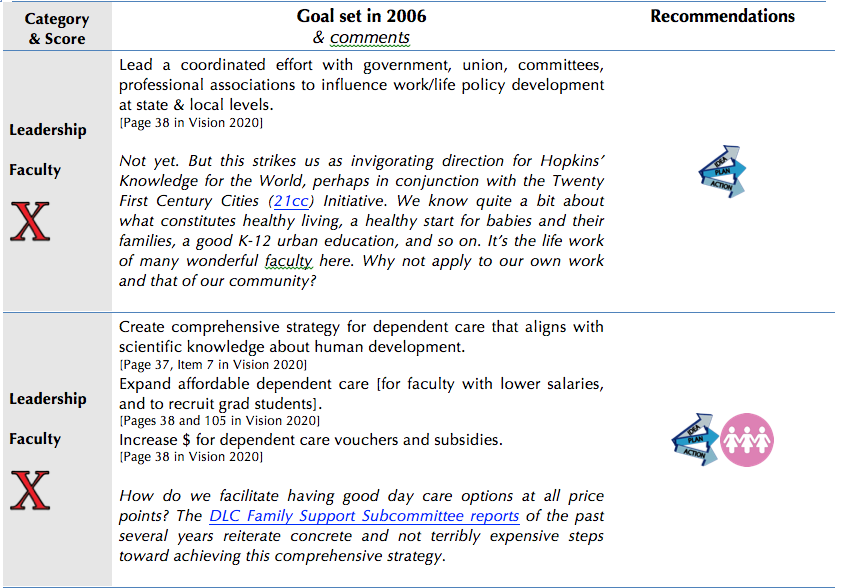For today’s blog post we bring out vintage questions about the relationship between knowledge and action, research results and best practices. Have at it.

For today’s blog post we bring out vintage questions about the relationship between knowledge and action, research results and best practices. Have at it.

On the “documents” page of our blog, there’s a 2015 report on how peer institutions handle child care needs for faculty, staff, and grad students. Here’s how it concludes:
With the exception of the two universities that provide no financial assistance to affiliates, Johns Hopkins stands behind its peer institutions with respect to how it addresses childcare tuition assistance. While Johns Hopkins is on par with most institutions in that it offers tuition assistance only to full-time faculty and staff, four provide financial assistance also to graduate students, and two extend their programs to part-time employees. Like Cornell, Princeton, and Stanford, Johns Hopkins offers a $5,000 grant to eligible faculty and staff—an award that is very common across these institutions. However, at Johns Hopkins, to earn the grant, an employee most earn equal to or less than $50,000, while at Stanford, this grant is granted to faculty members with household incomes between $175,000 and 199,000. At Cornell and Princeton, employees eligible for the subsidy must earn a household income below $150,000 and $130,000, respectively. It is true that, between these institutions, there exists a large disparity in endowments. But Brown, whose endowment is comparable to that of Johns Hopkins, has established a subsidy program for which household income eligibility requirements is double that of Johns Hopkins. And Dartmouth, which also has a relatively small endowment, has implemented a scaled-tuition system that helps to place it within the reach of lower-income employees.
This is a different comment, but I can’t figure out how to not make it a “reply.” Sorry. Here goes–this has more to do with the 1st goal on this page– The goals of 21CC include this:
“Across its six core strands (expanding opportunity, transforming education, promoting wellbeing and health, strengthening infrastructure, cultivating the arts, and creating wealth), 21CC will work to identify cross-cutting themes, and seek solutions that are distinctive to the 21st century city. Reimagining the city will be a core theme.”
It seems to me that affordable child care is an important piece of this goal, and one that would benefit not only JHU faculty, staff, and students but also Baltimore City. You can read about the other goals here: http://www.21cc.jhu.edu/what-we-do/goals/
FOR EXAMPLE: As the DLC has recommended for a couple of years now, JHU should invest in professional development for the teachers and aides at the Weinberg YMCA on 33rd Street. It’s a beautiful day care that we helped build; families who have kids there have free Y memberships; they have a great playground; it’s very affordable, as day care goes. But staff turnover is very high, and that makes it not a great option for many families. JHU could do something good for the community AND make better use of its reserved spots there if it took specific, direct, and informed (I’m talking about everything that SPH and the medical school and the social scientists know about child development) steps to improve the curriculum and the care at the Y.